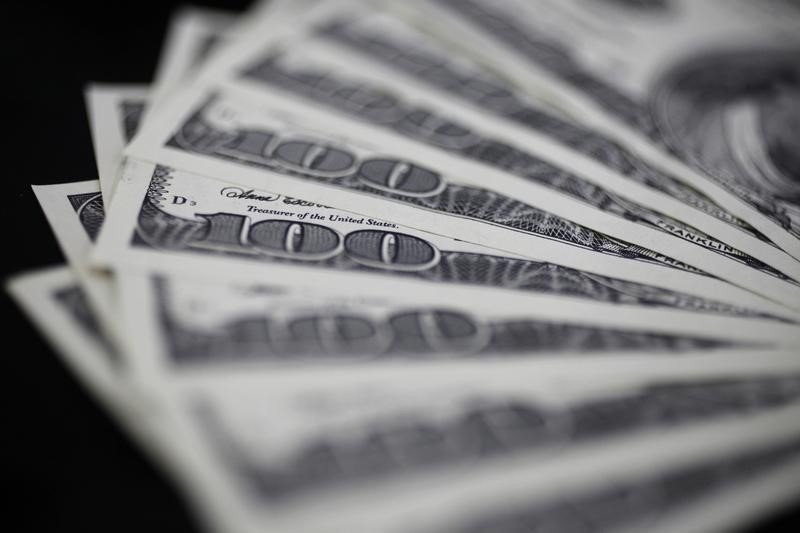Investing.com - The dollar extended gains against a basket of other major currencies on Tuesday, after data showed that the U.S. trade deficit widened less than expected in May and as demand for the safe-haven greenback remained supported amid ongoing Greek debt worries.
The U.S. Bureau of Economic Analysis reported on Tuesday that the U.S. trade deficit rose to $41.87 billion in May from $40.7 billion in April, whose figure was revised from a previously reported deficit of $40.88 billion.
Analysts had expected the U.S. trade deficit to widen to $42.6 billion in May.
The U.S. dollar index, which measures the greenback’s strength against a trade-weighted basket of six major currencies, was up 0.93% at 97.33, the highest level since June 2.
EUR/USD tumbled 1.19% to 1.0927 as Greek Prime Minister Alexis Tsipras was to present new proposals to euro zone finance ministers later in the day, ahead of a meeting of European officials to discuss the aftermath of Sunday’s referendum in Greece.
Greek banks were set to remain closed on Tuesday after capital controls were extended until Wednesday, amid concerns that lenders are close to running out of cash. Banks have been shuttered since last Monday, with ATM withdrawals limited to €60 per day.
The European Central Bank announced Monday that it would keep its emergency liquidity assistance to Greece unchanged at levels announced last Monday.
The ECB also said it will adjust the haircuts on collateral accepted by the Bank of Greece as part of the ELA, adding to pressure on Athens.
The pound also pushed lower, with GBP/USD down 1.12% to 1.5432.
The U.K. Office for National Statistics earlier reported that industrial production rose 0.4% in May, compared to expectations for a decline of 0.2%. But the manufacturing sector remained weak, with output falling 0.6% after a 0.4% drop in April.
On a year-over-year basis, industrial production increased by 2.1%, the strongest annual growth since April of 2014, and manufacturing was up 1.0%.
Elsewhere, the dollar was steady against the yen, with USD/JPY at 122.49 and higher against the Swiss franc, with USD/CHF gaining 0.76% to 0.9498.
The Australian and New Zealand dollars were weaker, with AUD/USD down 1.03% at six-year lows of 0.7423 and with NZD/USD retreating 0.85% to a fresh five-year trough of 0.6629.
Earlier Tuesday, the Reserve Bank of Australia held its benchmark interest rate at a record-low 2.00%, in a widely expected move.
At the same time, the New Zealand Institute of Economic Research reported that its business confidence index fell to 5 in the second quarter from a reading of 23 in the three months to March.
Meanwhile, USD/CAD climbed 0.80% to trade at three-month highs of 1.2754 after data showed that Canada's trade deficit widened to C$3.34 billion in May from C$2.99 billion in April, whose figure was revised from a previously estimated deficit of C$2.97 billion.
Analysts had expected the trade deficit to narrow to C$2.50 billion in May.
